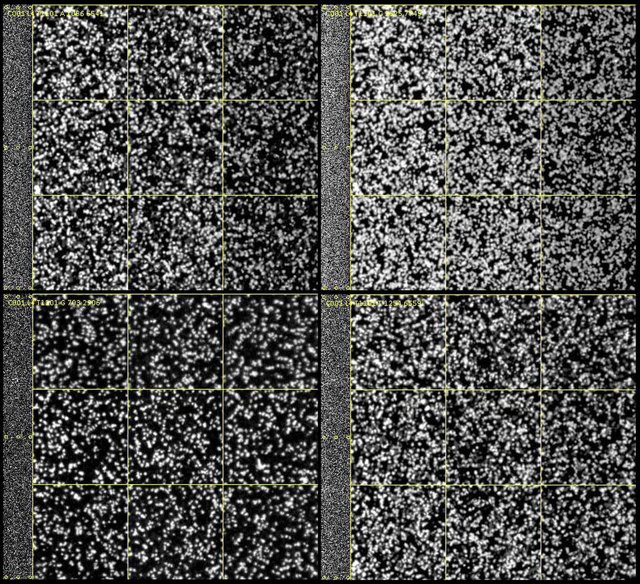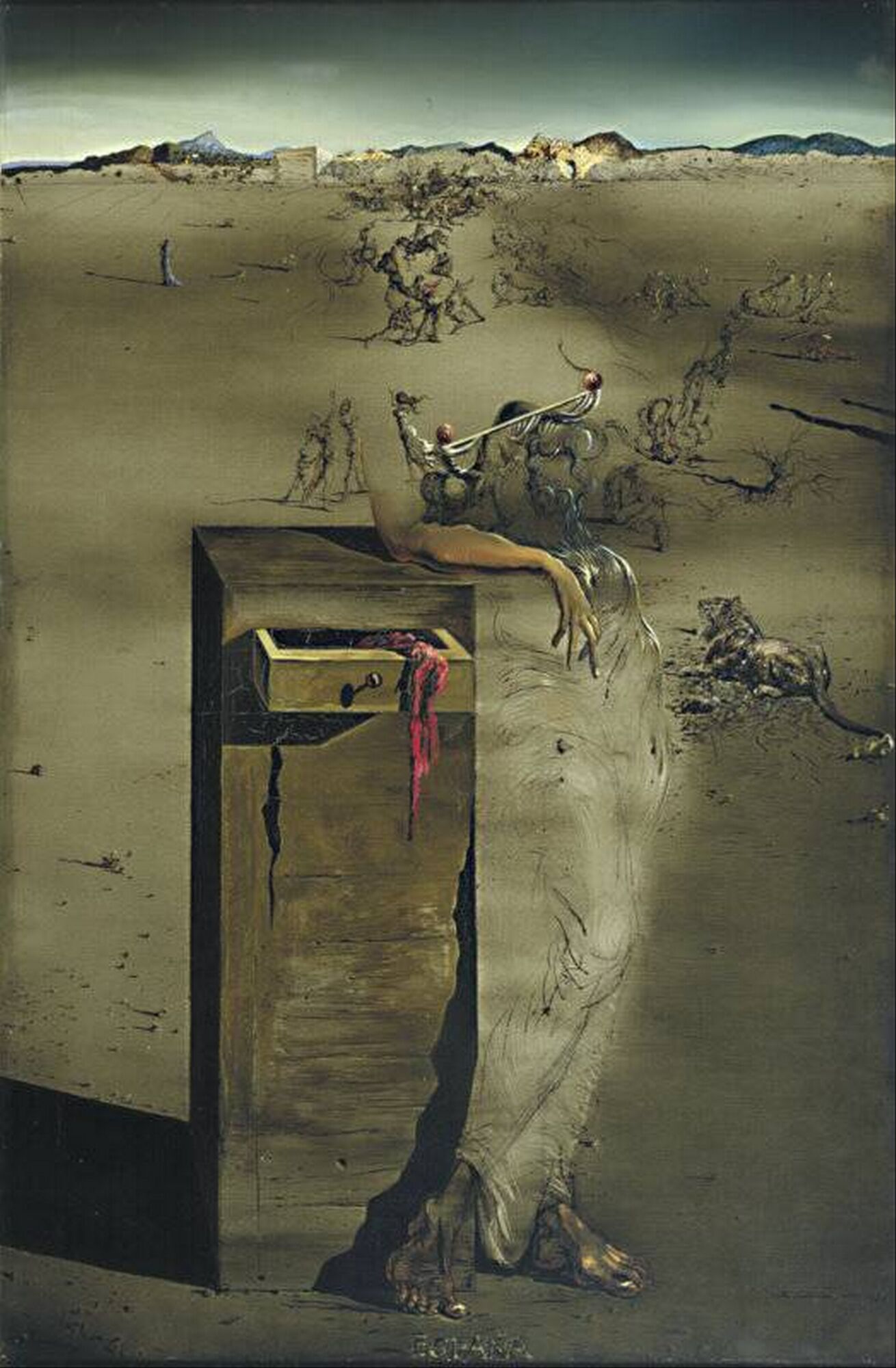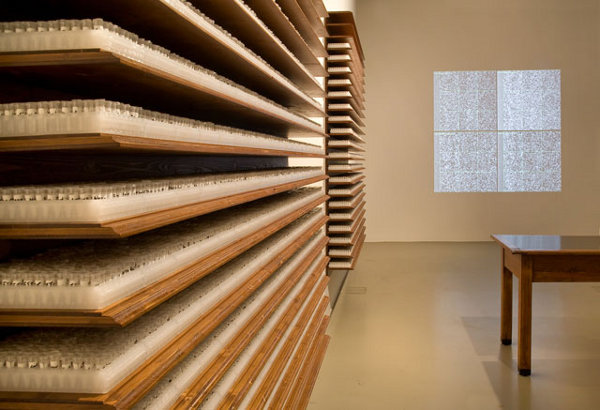Epigenetic Reset
documenta[13]: participating artist
Collaboration with Dr. Alexander (Sasha) Tarakhovsky, head of the Laboratory of Lymphocyte Signalling at Rockefeller University in New York.
PCR Machine // 80,000 Eppendorf tubes containing a mixture of 80,000 Genes from 80,000 people // DNA Sequencing Video // Lecture about Epigenetics on monitor // Salvador Dali's L’Espagne & Le Grand Paranoique.
Two commissioned films on EPIGENETICS and DNA SEQUENCING PROJECTION reinforcing the notion of identify erasure. My work consisted in the creation of a DNA sequencing video, a lecture series illustrated by drawings from Dr. Tarakhosky, on display as part of the exhibit and general oversight on the assembly of the exhibit as a whole.
EPIGENETICS is the study of how lived experience influences the expression of genes without altering the nucleotide sequence. These shifts in gene expression can be passed on to offspring, and often the field focuses on how intense emotion can have an impact on the expression of genes.
ABOUT THE EXHIBIT “EPIGENETIC RESET”:
“Seeking himself to achieve some semblance of provocation, Tarakhovsky took advantage of the average individual’s understanding- or, better said, lack of understanding- of genetics in general. To create unease among viewers, Tarakhovsky presented a PCR machine, used in the laboratory to produce copies of a specific DNA sequence, and claimed that the DNA inside was that of “someone who suffered from obsessive-compulsive disorder.” The machine was placed alongside a display of 80,000 tubes (signifying the number of working genes in each cell) filled with a mixture of DNA that Tarakhovsky claimed was obtained from 80,000 individuals- with names on each one.
The machine, already toying with the notion of endless repetition magnifying individuality, often associated with DNA, to the point of absurdity, also is an homage to Marcel Duchamp. Duchamp’s presentation of a urinal, or pissoir, as a piece of art, is recalled here in the pronunciation of the acronym PCR. Amplifying a gene “to maximum nonsense” was Tarakhovsky’s way of “resetting” the game, of undermining stability and memory, and of pointing out the human tendency to regard DNA as quintessentially individual. A projection of DNA sequencing, represented by flashes of little dots and surrounded by two Dalí paintings rounds out the exhibition, prompting viewers to once again reinforce their unease by suspecting that the DNA is being read, a reaction Tarakhovsky finds highly amusing.




